Flaccid paralysis occurs when the facial muscles lose their tone and strength due to damage or dysfunction of the facial nerve. This condition can result in complete or partial loss of movement on one side of the face, impacting expressions, eye closure, and speaking.
What Is Flaccid Paralysis?
Flaccid paralysis occurs when the facial muscles weaken due to damage to the facial nerve or muscles. The result is a complete lack of movement in the face.

Causes
Damage to the facial nerve resulting in flaccid paralysis can be caused by a number of conditions, including:
- Congenital facial nerve disorders such as Mobius syndrome where there is an absence of the nerve and related craniofacial anomalies where the muscles may not be present.
- Trauma – Partial or complete paralysis of the facial nerve via traumatic injury.
- Bell’s palsy from infectious causes such as viral Herpes Simplex or Varicella Zoster virus, etc. This is the most common cause. Most patients will recover fully, however, approximately 30% will not.
- Stroke
- Autoimmune
- Surgical Causes
Symptoms
Common symptoms of flaccid paralysis are reduced muscle tone, an inability to contract the muscles manifesting itself in such ways as an inability to close the eye, or lift the corner of the mouth. Inability to generate eyebrow elevation, eye closure or smile. Speech impairment as well as difficulty eating or drinking are also symptomatic of flaccid paralysis.
Treatment for Flaccid Paralysis
Treatment for flaccid paralysis can be medical, or surgical, or a combination. Physical therapy is also essential.

Medical Treatment
Corticosteroids
In general, medical treatment applies to acute, infectious causes and consists of high dose corticosteroids (Prednisone) and antiviral agents (valacyclovir). It is important to initiate these medications as soon as possible within a few days up to the first 2 weeks. A viral reactivation along the nerve causes swelling of the nerve. As the nerve exits the skull from the brain to the cheek, it passes through a very narrow bony canal. As the nerve swells, it causes constriction of the blood supply to the nerve and essentially ‘chokes’ it. The steroids reduce swelling of the nerve.
Antibiotics and Antiviral Medications
There is evidence that Bell’s Palsy is caused by viral reactivation along the nerve. Valtrex is used to quell the viral effect. Depending on the patient’s history, other medical treatments may be prescribed.

Facial evaluation
We evaluate the face by horizontal zones. The upper zone is located between the hairline and the eyebrows – here we check the position of the left and right eyebrows and whether the movement is symmetric. The middle zone is located between the eyebrows and the bottom of the nose – we note the prominence of the nasolabial fold, and the position of the nostril. The lower zone encompasses the smile- corner of the lip, amount of smile elevation, lower lip pull and neck.
Surgical Treatment
In either flaccid or synkinetic (non flaccid) paralysis, surgical treatment may be recommended. The surgical approach may be both static and/or dynamic. In all cases, face-lift and cosmetic approaches are used for minimal scarring. A comprehensive problem oriented approach should include a combination of these approaches to balance the face.
Static approaches to give facial symmetry
The aim of a static approach is to give the face symmetry at rest.

Upper third zone
Brow lift – one eyebrow may be ptotic (droopy). This can be lifted with small incisions placed in the hairline. Upper eyelid not closing fully – a small incision is placed in the eyelid crease and a thin profile platinum eyelid weight is placed on the eyelid cartilage. This added weight helps the eyelid close fully.
Middle third
Lower eyelid pulls away from eye surface – The lid is pulled up or the tissues may be augmented with a graft to lift the lower eyelid. The nostril is rotated downwards and there is obstruction of airflow on that side – This can be lifted with a small incision around the curve of the nose. A strip of fascia from the leg can pull this up back to its normal position.
Lower third
The oral commissure (corner of the lip) is droopy – A facelift incision and fascia from the leg is used to lift the corner. Opposite face – Botulinum toxin A is used to tone down some areas of comparative overmovement.
Dynamic approaches to smile reanimation
In some cases of long standing facial palsy, the facial muscles are no longer viable. Other muscles nearby or from other places of the body are used to reanimate the face.
Local muscle transfer Temporalis transfer
The temporalis muscle is a bite muscle. It can be pulled down to the corner of the lip. The act of ‘biting’ gives a smile.

Free muscle transfer
A healthy muscle from the leg is harvested and brought up to the paralyzed side with its nerve, artery and vein. Once it integrates, the patient is able to show a dynamic smile. Contact our office today to schedule an appointment for you or a family member with one of our specialists.
Schedule your consultation
New York Facial Paralysis, located in Midtown East, Manhattan, specializes in the treatment of flaccid paralysis and facial function restoration. Under the leadership of Dr. Teresa O, a board-certified expert in facial plastic and reconstructive surgery, our clinic provides advanced, customized solutions to address muscle weakness, facial asymmetry, and loss of movement. With a focus on restoring both function and natural appearance, Dr. O delivers compassionate, expert care to help you regain control, comfort, and confidence. Schedule a consultation today to learn how our specialized treatments can support your recovery and restore balance to your face.


